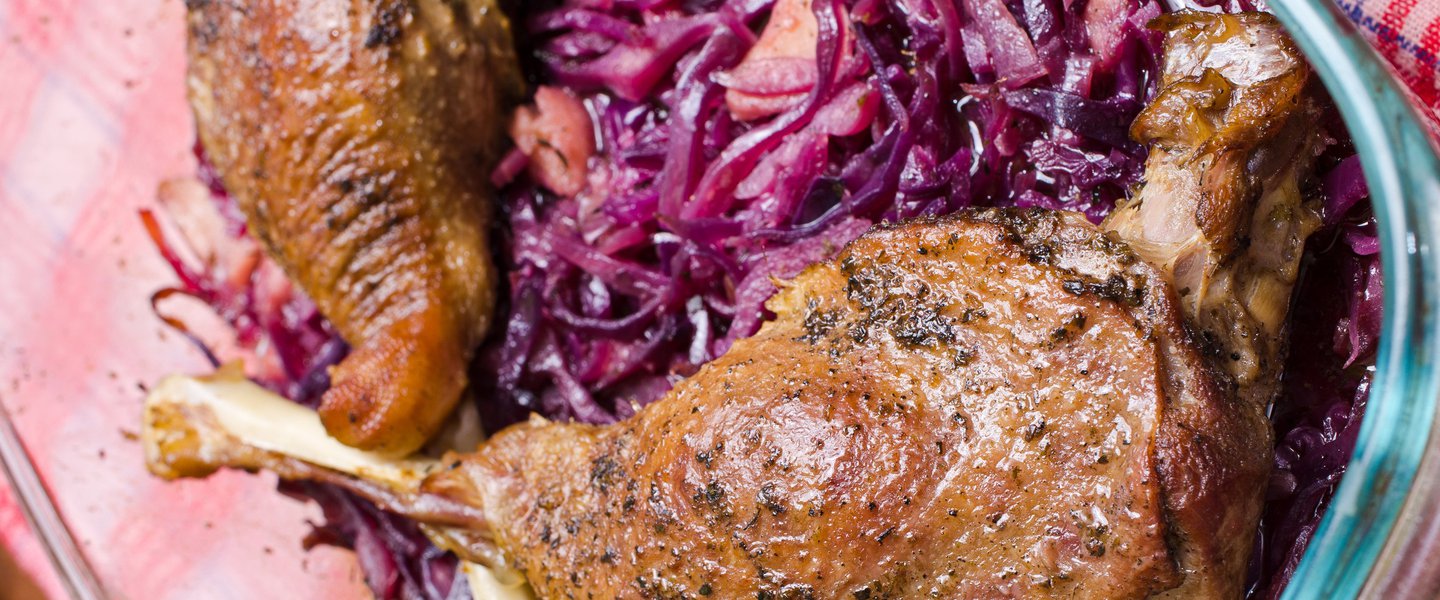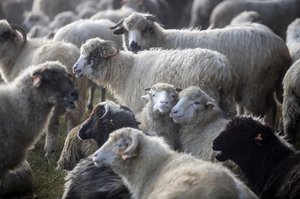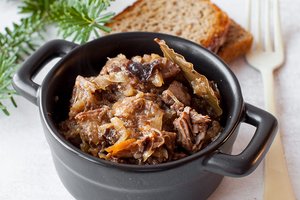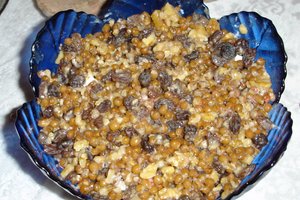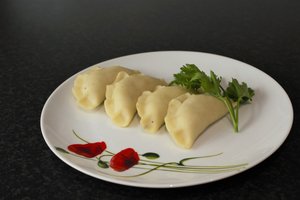Goose for fall
The season for goose meat starts in November. The poultry is popular in the Kujawy region. Goose dishes are eaten also in Pomorze, although the cuisine of that region is dominated by fish.
Geese have been bred in Poland since the 17th century. Even though today Poland is the largest producer of this meat in Europe, the tradition of eating geese has almost died out. Despite this, during the last few years, goose dishes have begun to be served again, especially in Autumn. “Slowly, but systematically we have been creating our own culinary tradition of serving goose on 11 November, which is St. Martin’s Day, and more importantly, Poland’s National Independence Day. We have chosen goose, because, first of all, it revives the tradition of Polish cuisine and, secondly, it makes delicious meals befitting holiday dinners,” says Piotr Całbecki, Marshal of the Kujawsko-Pomorskie Voivodeship.
Marshal Całbecki recommends his favourite goose dishes. “I like to eat goose with apples and marjoram or czernina or soup made of thick blood and dried fruit,” says Całbecki. My speciality is boneless goose stuffed with buckwheat and giblets with raw beets with vinegar.
Another favourite regional dish in Kujawy is broth made from goose wings, stuffed goose neck and aspic made of goose feet. Kujawy żur, a traditional soup made from fermented bread or rye flour, is also popular.
Goose breast is a regional product made of prime white Kołuda or oat geese. This bird species is raised in Kołuda Wielka near Inowrocław on a breeding farm in the National Geese Research and Breeding Centre, the only such farm to exist in the world. Geese walk on ranges, meadows and pastures and fallow lands. They use water holes and natural watering places. The goose meat is healthy, clean and free of chemicals. During the last three weeks of their life birds are only fed oats, hence the meat’s excellent taste.
The Kujawy region, situated in the basin of the middle course of the Vistula and upper Notec rivers, boasts many mouth-watering delicacies. These include: plum jam from the Lower Vistula Valley, bread from Stolno, Kujawy holiday ham on the bone as well as sausage in a jar made from a local variety of pork, Zlotnicka Pstra.
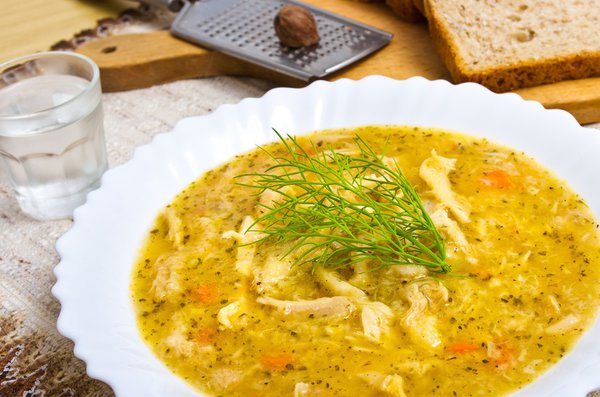
Kujawy żur with goose breast - Recipe by Artur Moroz, chef of the Bulaj restaurant in Sopot
Ingredients:
bones from roast geese left over from a holiday dinner
1 litre of Kujawy żur in a bottle or homemade leaven made from rye flour
a bunch of mixed vegetables (carrot, leek, celeriac and parsley)
50 g of dried mushrooms
sour cream to add to żur
goose breast cuttings
4 cloves of garlic
2 tablespoons of horseradish
Salt, pepper, marjoram, bay leaves, all spice
Preparation:
Place roast goose bones left over from a holiday dinner in a pot with mixed vegetables, bay leaves and allspice. Cook over low fire for approximately three hours. After this time, you will get a soup full of aroma and not too fatty broth, because most of the fat will have melted during roasting. Next, we strain the broth, add mushrooms that have been soaked in water and cuttings from goose breast.
We continue to keep the soup over a low flame for some time to let the broth absorb the flavour of mushrooms and smoked goose breast. We then pour in the leaven, constantly mixing to keep the texture smooth; as we add the leaven, we taste the soup. It should not be too sour, but just enough so. Finally we add horseradish and garlic to taste and sour cream to make the soup white.
Fish in many different forms
Pomorze lands have access to the sea and inland lakes and rivers, their most prized assets. Flounder, perch, cod, and mackerel are smoked, marinated, cooked and fried here. Herrings are very popular – they are soaked in water for a dozen or so hours, marinated in vinegar and seasoned with herring roe or sour cream. Potatoes cooked in skin are served as a side dish. Herrings can be served with scrambled eggs, as soup and in many other ways. In this region, freshwater roaches, perch, bream, pike, pikeperch, eel (eel tripe is a local delicacy) are popular dishes.
Potatoes and bread are important elements of Pomorze’s regional cuisine. Boiled potatoes are added to bread to keep it fresh. Pancakes called plince are made of fried potatoes.
In Pomorze, a popular bread spread is okrasa – chopped or minced goose meat with lard (in the past also with bones) seasoned with salt and herbs. It is kept in clay pots in a cool place. Czernina or soup made of goose blood is served locally in different forms. For instance, the inhabitants of this part of Kaszuby which is situated below the Baltic Sea level with their own distinctive culture and language have their own recipe – they serve this soup with dried prunes, apples and pears.
Kashubian leavened pancakes or ruchocze are served warm for dessert. These pancakes are traditionally eaten during Mardi Gras festivities. The so-called brzad or dried fruits are a popular ingredient of many dishes: boiled in water they make compote; they are served with meat dishes. Brzad soup is made from dried fruits boiled in water thickened with flour, with sour cream added and sweetened.
Monika Kucia – culinary journalist and author of Cuisine PL, a brochure published during the Polish Presidency of the EU Council to promote Poland’s gastronomy. Co-author with Kurt Scheller of Polish Cuisine Rediscovered.
20.10.2014
